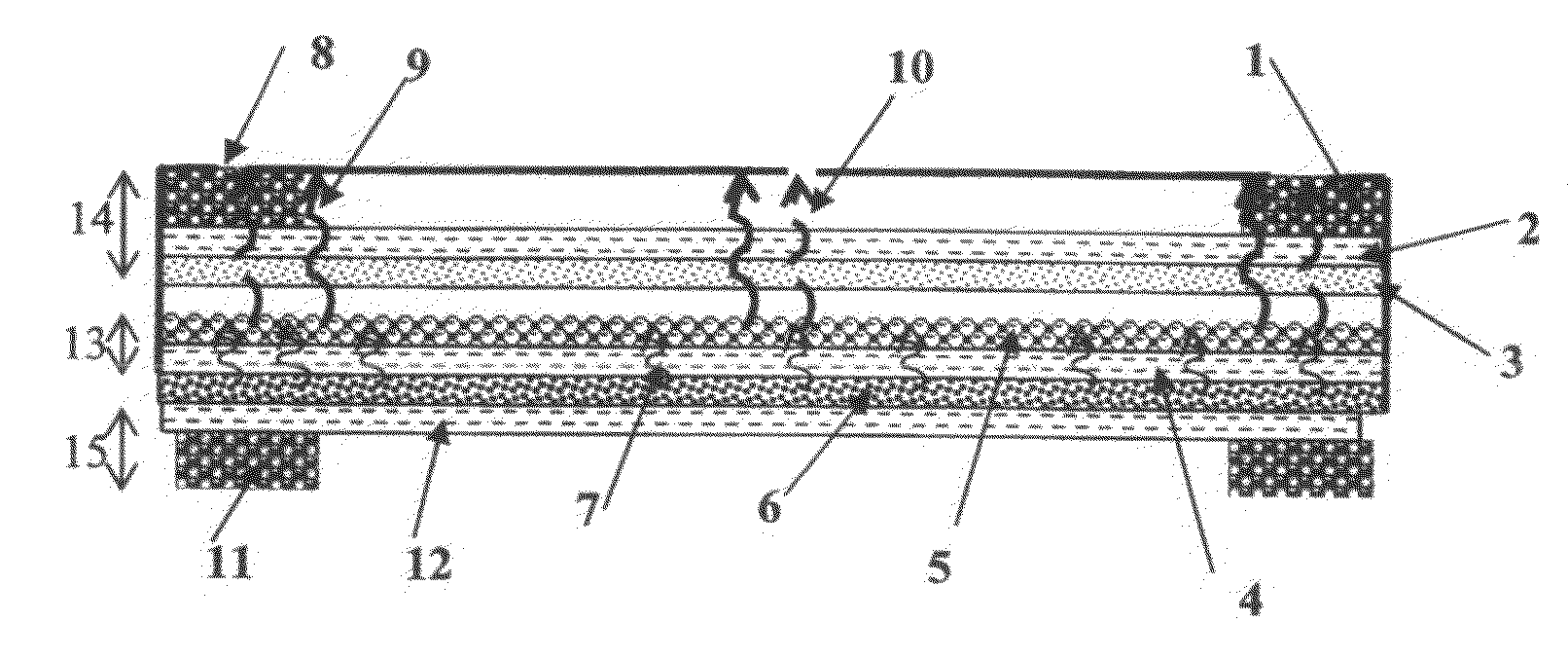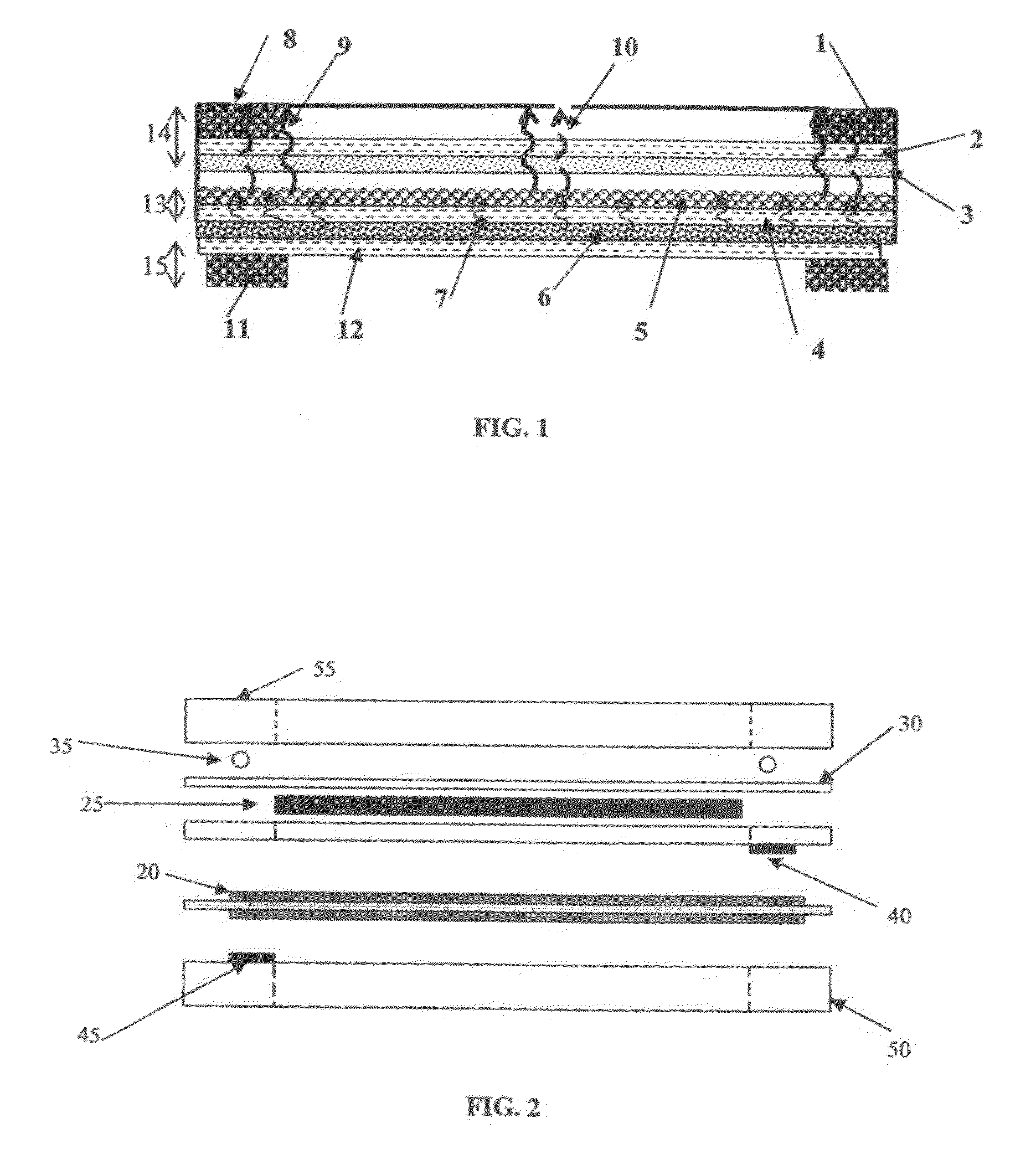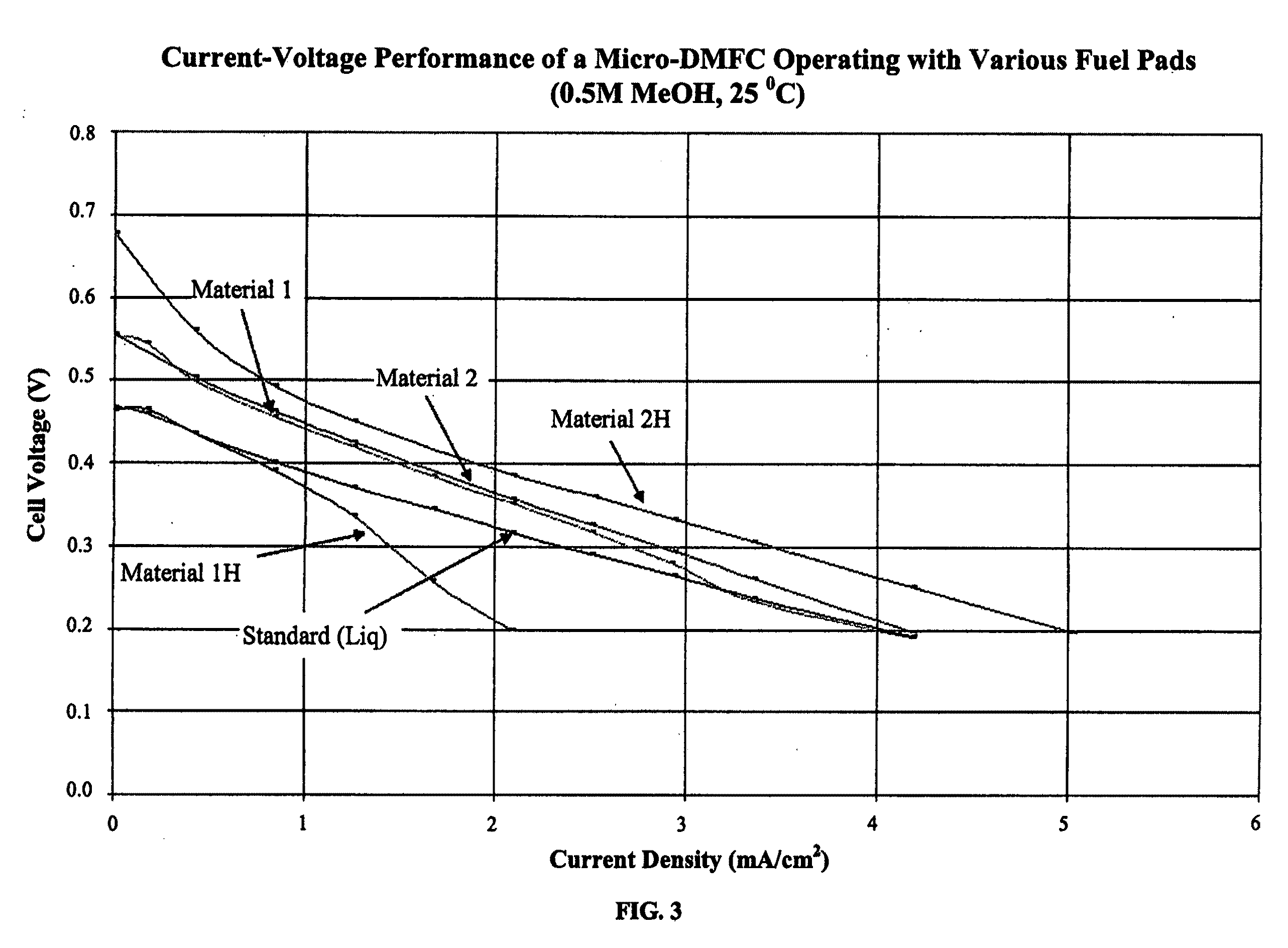Fuel cell with passive operation
- Summary
- Abstract
- Description
- Claims
- Application Information
AI Technical Summary
Benefits of technology
Problems solved by technology
Method used
Image
Examples
Embodiment Construction
[0031]A fuel cell stack design can be assembled by combining specialty media layers with the Membrane Electrode Assembly (MEA) materials to produce a thin, low-cost fuel cell suitable for portable applications. The media layers provide the following functions in the fuel cell:
[0032]Fuel delivery means
[0033]Gas-liquid separation at the anode site
[0034]Water management and oxygen delivery at the cathode site.
[0035]Combining all three components (fuel delivery, gas-liquid separator (GLS), and liquid management) with a membrane electrode assembly (MEA) containing anode and cathode catalysts on either side results in an operational fuel cell stack. FIG. 1 shows an embodiment of the fuel cell design that gives additional detail on each layer of the stack components.
[0036]In FIG. 1, fuel is stored in the absorbent layer 5 of the fuel delivery material and is transferred by the wicking layer 4 of the fuel delivery material to the anode side of the MEA 6. The absorbent layer 5 and the wickin...
PUM
 Login to View More
Login to View More Abstract
Description
Claims
Application Information
 Login to View More
Login to View More - R&D
- Intellectual Property
- Life Sciences
- Materials
- Tech Scout
- Unparalleled Data Quality
- Higher Quality Content
- 60% Fewer Hallucinations
Browse by: Latest US Patents, China's latest patents, Technical Efficacy Thesaurus, Application Domain, Technology Topic, Popular Technical Reports.
© 2025 PatSnap. All rights reserved.Legal|Privacy policy|Modern Slavery Act Transparency Statement|Sitemap|About US| Contact US: help@patsnap.com



